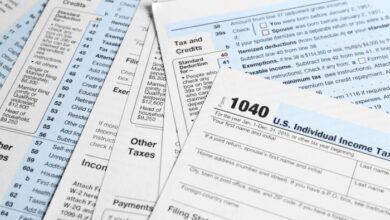
Internet tax proponents claim public support, but is this truly the case? This blog post delves into the arguments, data sources, and public discourse surrounding this complex issue. We’ll examine how proponents measure support, potential biases in data collection, and compare these claims with opposing viewpoints. We’ll also explore the historical context of similar taxes, the potential impacts, and the implications for policy decisions.
The core question is whether the perceived public support for an internet tax is genuine, or a carefully constructed narrative. By analyzing various data points and public opinions, we can try to uncover the truth behind these claims.
Understanding Public Support Claims
Proponents of an internet tax often assert widespread public support, claiming that a majority of citizens favor such a levy. This assertion, however, requires careful scrutiny. The nature of public opinion on this complex issue is nuanced and often depends on how the question is framed and the specific details of the proposed tax. It’s not enough to simply state public support; the specifics of how that support is measured are crucial to understanding its validity.
Summary of Proponents’ Arguments
Proponents frequently argue that a broad segment of the population supports an internet tax, citing surveys and polls as evidence. Their arguments often hinge on the perceived need for funding specific public services or infrastructure, suggesting that the internet tax would be a fair and equitable way to generate revenue. They may emphasize the substantial revenue potential of the tax, and the idea that it would be levied on a large segment of the population, thereby making it a relatively low-cost method of collecting significant funds.
These arguments often overlook the potential negative impacts on internet access and economic growth.
Different Ways of Measuring Public Opinion
Proponents might utilize various methods to gauge public support. These methods can include online surveys, focus groups, and public opinion polls. Crucially, the phrasing of the questions in these surveys significantly impacts the results. For example, a question framed as “Do you support a tax on internet services to fund vital public services?” might elicit a different response than one that explicitly details the tax rate or potential impact on internet usage.
Furthermore, the demographics of the sample surveyed can significantly affect the outcome.
Potential Biases and Limitations
Data collection methods employed by proponents may suffer from several biases. Self-selected online surveys can be prone to bias as participants are not a representative sample of the population. Focus groups, while potentially insightful, can be influenced by the dynamics of the group and the moderators. Furthermore, the way the questions are framed in surveys and polls can significantly impact the results, leading to misinterpretations of public sentiment.
The timing of the survey, and any events that might influence public opinion in the lead-up to the survey, can also lead to skewed results. The lack of follow-up questions or nuanced explanations about the tax and its potential effects can also be a significant shortcoming.
Comparison of Claims and Counterarguments
| Claim | Evidence | Potential Criticisms |
|---|---|---|
| Widespread public support exists for an internet tax. | Surveys showing majority support for internet taxes to fund public services. | Surveys may be poorly constructed, sampling may not be representative, or the questions may not fully explore the nuances of the issue. Potential for framing effects to skew results. |
| Internet tax is a fair and equitable way to fund public services. | The revenue generated could fund vital services like education, infrastructure, and public safety. | The fairness and equity are debatable. Potential for regressive impacts on lower-income households who rely heavily on internet access. Other revenue sources might be more suitable. |
| Internet tax is a low-cost way to generate substantial revenue. | Calculations of revenue potential based on internet usage. | Calculations may not account for potential reductions in internet usage, economic impacts on businesses and individuals, and potential administrative costs. |
Examining Data Sources
Proponents of an internet tax frequently cite public support as justification. However, the reliability of this claimed support hinges critically on the quality and methodology of the data sources used to establish it. Understanding the nature of these sources, their potential biases, and the methods employed is crucial for evaluating the validity of the support claims.The validity of any claim relies heavily on the source and methodology of the data.
In the context of an internet tax, claims of public support must be examined meticulously, looking at the methodology, potential biases, and reliability of the data.
Data Sources Used to Gauge Public Opinion
Various data sources are used to gauge public opinion on an internet tax, including surveys, polls, and focus groups. These methods can provide valuable insights, but their effectiveness depends on the methodology employed.
- Surveys are frequently used to gather quantitative data on public opinion. Surveys can be conducted online, by phone, or in person, allowing for a wide range of participants. They often use structured questionnaires to collect data on specific aspects of the internet tax, including potential costs, benefits, and alternative solutions. However, surveys can be prone to sampling bias, where the sample population does not accurately reflect the overall population.
Internet tax proponents are claiming broad public support, arguing that it’s a necessary step to fund crucial digital infrastructure. However, a recent development like Barnes Noble getting an exclusive deal with Go2Net, a new online retailer, might complicate matters. Perhaps this deal signifies a shift in the market, potentially affecting how we view the need for internet taxes.
Ultimately, the claim of widespread public support for internet taxes remains to be seen. barnes noble gets exclusive with go2net
Furthermore, the wording of questions can significantly influence responses, leading to biased results.
- Polls, often conducted in the context of news reporting or political campaigns, provide snapshots of public opinion on specific issues. They often involve a smaller sample size compared to surveys and are frequently used to gauge short-term trends in public opinion. Polls can be influenced by the way questions are framed and the time of the poll, potentially creating inaccurate reflections of public opinion.
- Focus groups, consisting of a small group of individuals, offer valuable qualitative data. These groups allow for in-depth discussions about an internet tax, enabling researchers to understand the reasons behind opinions and gather more detailed feedback. However, the small size of focus groups limits the generalizability of results to the broader population. Furthermore, the presence of a moderator or group dynamics can influence the outcomes of the discussion.
Methodology and Potential Biases in Data Collection
The methodology used in data collection significantly impacts the reliability of the results. Potential biases include sampling bias, where the sample does not accurately reflect the population, leading to skewed results. Furthermore, the phrasing of questions and the order in which they are presented can influence responses, leading to biased outcomes. The method of data collection (e.g., online survey, phone interview) can also introduce bias.
- Sampling Bias: If a survey targets only specific demographics (e.g., internet users in a particular age group or income bracket), the results might not be representative of the entire population. For example, if a survey on an internet tax is conducted solely through online platforms, it might miss the opinions of individuals without internet access.
- Question Wording: The phrasing of survey questions can be strategically designed to elicit specific responses. For instance, a question that emphasizes the benefits of the tax might generate more support than one that focuses on the potential costs. A question might subtly lead respondents toward a particular answer.
- Order of Questions: The sequence in which questions are presented can also influence responses. Subsequent questions can be influenced by earlier questions, creating a bias in the results.
Examples of Survey Questions
Effective survey questions need to be neutral and avoid leading respondents toward a particular answer. Here are examples of survey questions that could be used to gauge public opinion on an internet tax, demonstrating different approaches:
- Neutral approach: “Do you think an internet tax is a fair way to fund public services?”
- Focusing on benefits: “Considering the need for increased funding for infrastructure improvements, do you believe that an internet tax would be an effective way to provide these improvements?”
- Highlighting costs: “Given the potential cost increases for internet services, do you support the implementation of an internet tax?”
Comparison of Data Sources
The table below compares and contrasts different data sources, emphasizing their strengths and weaknesses in measuring public support for an internet tax.
| Data Source | Strengths | Weaknesses |
|---|---|---|
| Surveys | Large sample size, quantitative data, cost-effective | Sampling bias, question wording bias, potential for superficial responses |
| Polls | Quick snapshot of public opinion, readily available | Small sample size, limited depth of information, susceptible to time sensitivity |
| Focus Groups | Qualitative data, deeper understanding of reasoning behind opinions | Small sample size, potential for groupthink, moderator bias |
Reliability and Validity of Presented Data
The reliability and validity of data presented by proponents of an internet tax need to be scrutinized. Carefully evaluating the methodology, potential biases, and the source of the data is essential to assess the validity of the claims.
Analyzing Public Discourse: Internet Tax Proponents Claim Public Support

Public discourse surrounding internet taxes offers a valuable window into public opinion. Understanding the nuances of online discussions, social media sentiment, and news coverage is crucial for assessing the validity of claims about public support. This analysis delves into the arguments, tones, and recurring themes present in the public conversation.Examining the online conversation surrounding internet taxes reveals a complex interplay of perspectives.
By analyzing the specific arguments used and the emotional tone employed, we can better gauge the depth and breadth of public support or opposition. This approach goes beyond simple counts of “likes” or “retweets” to uncover the underlying motivations and reasoning behind the expressed opinions.
Online Discussions and Social Media Posts
Public sentiment about internet taxes often manifests in online forums, social media platforms, and comment sections. The tone and volume of these discussions provide valuable insights into the level of public interest and the overall feeling towards the proposed tax. For example, if the tone is predominantly negative and characterized by concerns about affordability and access, it suggests that public support is less than claimed.
News Articles and Media Coverage
News articles often reflect the prevailing viewpoints and concerns within the public discourse. Analysis of news coverage can highlight common arguments and counterarguments. For example, articles may emphasize economic impacts or highlight arguments about fairness and equitable distribution of tax burdens. Careful examination of the framing and language used in these articles can reveal underlying biases or motivations.
Recurring Themes and Patterns in Arguments
Online discussions frequently revolve around several recurring themes. Identifying these themes allows us to categorize and understand the diversity of opinions and perspectives. Analyzing these patterns is crucial for assessing the depth of public support or opposition.
| Theme | Perspective | Arguments |
|---|---|---|
| Economic Impact | Proponents | Increased government revenue could fund essential services. |
| Economic Impact | Opponents | Tax could stifle economic growth and hurt businesses. |
| Fairness and Equity | Proponents | Internet use is a privilege that should be taxed. |
| Fairness and Equity | Opponents | Existing taxes already adequately fund services. |
| Access and Affordability | Proponents | Tax could increase internet access for low-income users. |
| Access and Affordability | Opponents | Tax could make internet access less affordable. |
Misinformation and Disinformation
Careful analysis of public discourse must also address the potential presence of misinformation or disinformation. Misinformation can stem from intentionally misleading information, while disinformation may arise from a combination of flawed reasoning or intentionally false narratives. It is essential to critically evaluate the sources and arguments presented in online discussions and news articles to identify potential instances of misinformation.
Internet tax proponents are claiming widespread public support, arguing that it’s a fair way to fund digital services. However, the recent move by Disney to join the online privacy campaign, perhaps surprisingly, suggests a different perspective on the digital economy. Maybe the public isn’t as supportive of new taxes as internet tax proponents claim, and instead, prioritize online privacy protections.
This raises some interesting questions about the long-term viability of internet tax proposals. disney joins online privacy campaign The public’s position on this issue is perhaps more complex than initially thought.
For example, unsubstantiated claims about the economic benefits of a tax, or the impact on internet access, should be scrutinized.
Internet tax proponents are claiming widespread public support, arguing that a new levy is necessary to fund crucial digital infrastructure. However, the upcoming debut of UK’s Freeserve on Wall Street, u k s freeserve to debut on wall street , could potentially shift the narrative. This could change the way people view the need for additional taxes on the internet, especially as the company’s success influences public perception of internet usage and costs.
Historical Context and Comparisons

The debate surrounding internet taxation often draws parallels to historical tax policies on emerging technologies and communication services. Understanding these precedents is crucial for evaluating potential public support for internet taxes today. Analyzing how past societies reacted to similar proposals reveals patterns and potential future outcomes. Examining the historical context, including the public’s response to previous forms of taxation on communication technologies, allows for a more informed assessment of the potential impact of an internet tax.A critical analysis of historical precedents reveals recurring themes in public discourse surrounding new technologies and taxation.
These themes often involve concerns about economic impact, fairness, and the potential for stifling innovation. Understanding these dynamics helps to anticipate and address similar concerns that may arise with the introduction of an internet tax.
Historical Examples of Taxation on Communication Technologies
Historically, various communication technologies have faced taxation. The introduction of the telephone, radio, and television all spurred public discussions about the appropriate level and method of taxation. Early examples of such taxes often focused on the infrastructure of these services, such as telephone lines or broadcast licenses. Public sentiment varied, with some arguing for the necessity of taxes to fund infrastructure development, while others opposed them as potentially burdensome or discriminatory.
Public Reaction to Past Taxation Policies
Public reaction to past tax policies on communication technologies was often multifaceted. Initial resistance frequently arose from concerns about the impact on consumer prices and accessibility. However, as the technologies became more ingrained in daily life, public acceptance sometimes evolved, particularly if the revenue generated was perceived as supporting essential services or public infrastructure.
Evolution of Public Opinion on Similar Taxes
Public opinion on taxes related to communication technologies often evolved over time. Initial resistance could give way to acceptance as the technology became commonplace and its benefits were more widely recognized. The acceptance or rejection of taxes also depended on factors like the perceived fairness of the tax system and its impact on different segments of society. For example, a tax on telephone calls in the early 20th century might have faced strong opposition from consumers, while later, acceptance could have grown as the widespread use of telephones became a necessity.
Comparison Table: Internet Taxes vs. Other Taxes
| Characteristic | Internet Taxes | Sales Tax | Property Tax | Income Tax |
|---|---|---|---|---|
| Tax Base | Internet access, transactions, or services | Goods and services | Real property | Income earned |
| Impact on Consumers | Potentially increased costs for internet access and services | Increased cost of goods and services | Cost varies depending on property value | Reduced disposable income |
| Revenue Generation | Potential to generate significant revenue from a vast user base | Significant revenue source for local governments | Revenue source for local and sometimes state governments | Primary revenue source for federal governments |
| Public Perception | Potential concerns about fairness and innovation | Generally accepted as a way to fund local services | Generally accepted as a necessary cost of property ownership | Generally accepted as a necessary source of government revenue |
Demographic and Regional Variations in Support
Public support for internet taxes is likely to vary across demographics and regions. Factors such as income levels, internet usage patterns, and access to technology could influence attitudes towards such taxes. For example, individuals in lower-income households might be more sensitive to the potential impact of internet taxes on their ability to afford online services. Similarly, regions with limited internet infrastructure or high reliance on internet-based businesses might have differing views on the necessity of an internet tax.
Understanding these variations is crucial for developing policies that are both effective and equitable.
Potential Impacts and Implications
Proponents of an internet tax often argue that it’s a necessary tool for funding vital public services, and that public support exists. However, the potential impacts of such a tax, both positive and negative, deserve careful consideration. These potential impacts span economic, social, and legal realms, and require a nuanced understanding of the arguments for and against the tax, as well as the potential for unintended consequences.Proponents of an internet tax frequently posit that it can generate substantial revenue for government use.
However, the actual economic impact is complex and depends heavily on the specific design of the tax and the resulting impact on businesses and consumers. Social and legal implications are equally important and warrant careful scrutiny, including an assessment of the potential for unintended consequences and the legal implications of claiming public support.
Potential Economic Impacts
The economic impacts of an internet tax are multifaceted. Proponents often argue that the tax will generate substantial revenue for public services, such as education, infrastructure, or healthcare. This revenue could be used to fund projects that benefit society as a whole. However, the tax could also lead to increased costs for businesses and consumers, potentially impacting economic growth and innovation.
The extent of this impact depends on factors such as the tax rate, the specific sectors targeted, and the design of the tax system. For example, a high tax rate might discourage investment in internet-related businesses, potentially hindering economic development. Conversely, a low tax rate might not generate enough revenue to significantly impact public services.
Potential Social Impacts
The social impacts of an internet tax are equally complex. Proponents might argue that the tax can help fund programs that benefit the broader community, such as affordable internet access for underserved populations or digital literacy initiatives. However, the tax could also exacerbate existing inequalities if it disproportionately impacts lower-income individuals or small businesses. Moreover, there could be social consequences related to internet access and usage if the tax makes internet services less affordable.
Potential Unintended Consequences
Unintended consequences of implementing an internet tax are always a possibility. Proponents might claim that the tax will only affect large corporations or specific sectors, but the reality could be different. For example, a tax on online transactions could unintentionally shift commerce to alternative platforms or tax havens. It could also create obstacles for small businesses, especially those operating entirely online, which might be disproportionately affected by the tax.
It’s important to consider how the tax will impact various segments of society and the potential for unforeseen issues.
Potential Legal Implications
Claims about public support for an internet tax have significant legal implications. If these claims are inaccurate or misleading, it could potentially raise concerns about the legitimacy of the tax and its implementation. Furthermore, legal challenges might arise regarding the fairness and equity of the tax, particularly if it disproportionately affects certain groups. The legal framework governing the tax’s design and implementation must be transparent and inclusive to avoid legal challenges and ensure public trust.
Influence on Public Perception and Policy Decisions, Internet tax proponents claim public support
Proponents’ claims about public support for an internet tax could significantly influence public perception and policy decisions. If the claims are perceived as credible and well-founded, it could lead to increased support for the tax. However, if the claims are seen as misleading or inaccurate, public opposition could increase, potentially delaying or even preventing the implementation of the tax.
Furthermore, the perceived level of public support could affect how policymakers prioritize and address this issue in the political landscape.
Conclusion
In conclusion, the claim that the public supports an internet tax is far from straightforward. While proponents present data and arguments, it’s crucial to critically evaluate the methodology, potential biases, and opposing viewpoints. Historical comparisons and an analysis of public discourse highlight the complexities of this issue. Ultimately, the legitimacy of these claims hinges on a nuanced understanding of the evidence, and the potential consequences of such a tax are significant and deserve thorough consideration.



